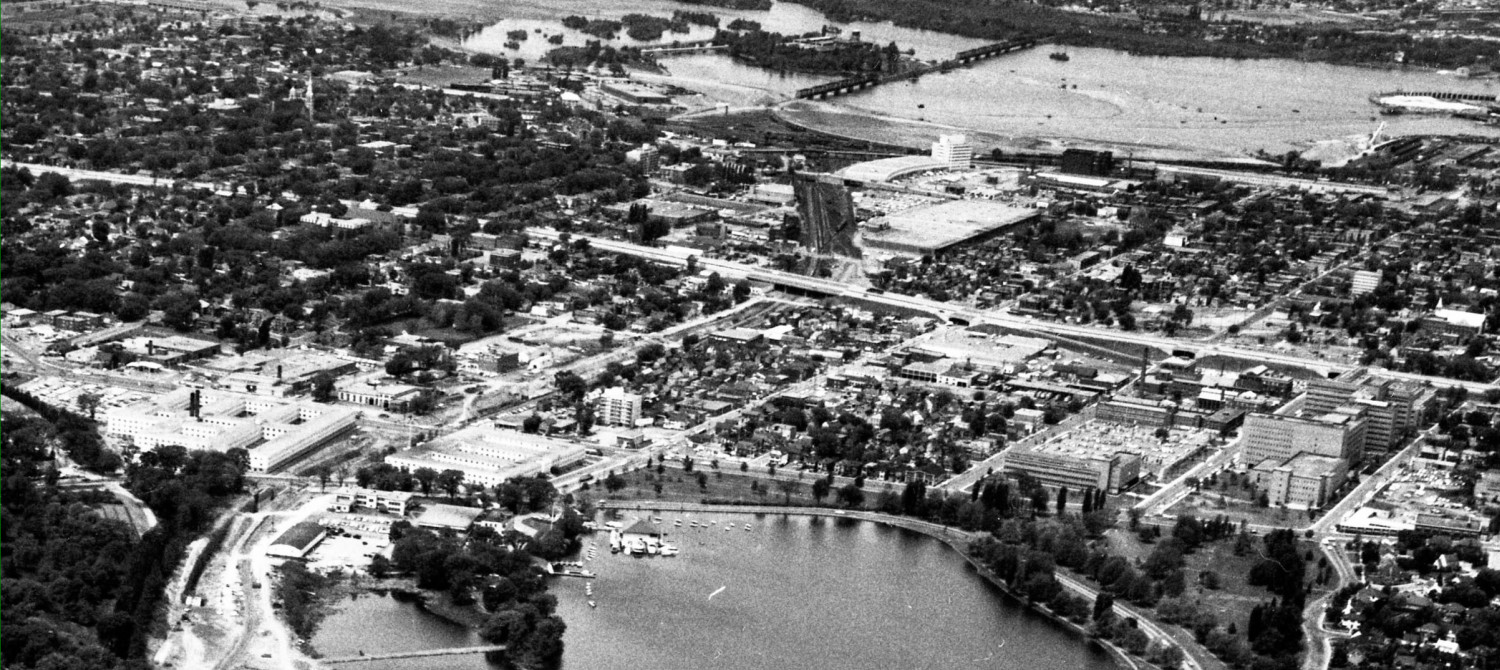Merivale Road is a curious creature. It is a place, a destination, thus functioning as a street. It accesses adjacent land, giving it value. And it also has a somewhat conflicting role as a through road to get from one area of the city to another. Especially for commuters from the southern suburbs accessing the Queensway via Merivale/Kirkwood.
The city is proposing some road changes to Merivale North, that section the runs up to Carling Avenue. They offer four complete street options. Some of them seem to me to quite at odds with how this section of the street functions now and what one might want in the future.
Ottawa has very few roads (roads go from A > B, without local services along them. Parts of Riverside or Hunt Club are like this.) Mostly Ottawa treats traditional main streets with local services as also being roads. And even when it builds good through-roads, it then buggers them up with endless commercial frontages such as Hunt Club on either side of Merivale. While called a road, Merivale North is actually a quite traditional main street.
The older urban part of Merivale runs south from Carling. It’s commercial strip is typical of the 1940’s – 50’s development there. Westgate was Ottawa’s first suburban shopping centre, built in the typical L shape. There is a large neighbourhood of “veterans homes” built by government funding post WW2, during a period of shortages. The houses were significantly smaller than the average prewar house and thus much much smaller than the average today. Many are 8-900 sq ft. The increased supply of housing was much wanted.
Federal planners built the first crescents and lollipop street pattern which was to eventually dominate all suburban development, and which here sits uncomfortably with the adjacent traditional grid streets and still impairs walking. The grid streets predate zoning so there is a variety of housing types (houses, duplexes, triplexes, apartments) and price ranges. In short, a complete community with a bit of suburbia grafted into the centre. Like suburbia, the area has shockingly few sidewalks.
The Merivale road itself runs slightly diagonally through the area. Some buildings squarely face Merivale, others are aligned with the side streets, making for a variety of frontages:
The traditional main street just south of Carling feel somewhat comfortable to me. Small scale, but with too many driveways and parking lots.
How shockingly different is the suburban arterial persona of Merivale south of Clyde. This is the planning creation of Nepean, a greenfield development dependent suburb happy to promote biggish stores set behind acres of parking. Walking simply isn’t possible between many of the adjacent stores. It is risky to walk to and from them along hostile roads to residential areas behind.
The third Merivale is the portion in between the traditional main street on the north end, and the parking lots of the south portion. Running along side the Farm, the area was developed starting in the late 1990’s and is pretty exclusively auto-oriented:
A local-commercial strip of storefronts is promised for the west side, under apartment buildings, to be built on the line of parking lots along the road. In recognition that this Merivale Road is wide, fast, hostile, and isn’t likely to have an “other side of the street” development, the proposed stores will face a line of surface parking lots on the west side of the buildings. Whether that line of stores will make a walkable “lane” or just a bunch of parking space buffers remains to be seen.
Merivale isn’t my home turf. I’m just a visitor, two times a month, in good weather by bike; in bad by bus. But I do have some affection for it, and interest in what the city is planning.
So… coming up next, the City’s four planning proposals for Merivale North (between Carling and Baseline).





